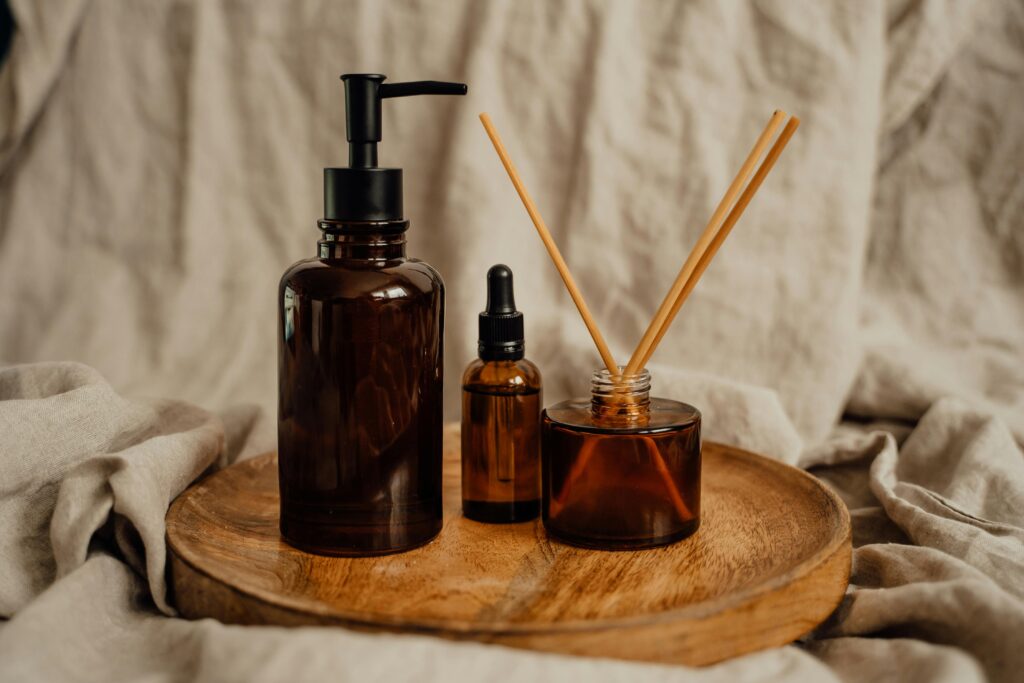How to Fragrance Your Home
A good home fragrance doesn’t just mask smells; it shapes how a space feels. This guide looks at the most popular ways people scent their homes, from candles and diffusers to sprays and natural alternatives,…

A good home fragrance doesn’t just mask smells; it shapes how a space feels. This guide looks at the most popular ways people scent their homes, from candles and diffusers to sprays and natural alternatives, and answers common questions like how to pick the right fragrance for each room. Read on for the only guide on how to use home fragrance you’ll ever need.
Top 5 Ways to Fragrance Your Home
There’s more than one way to peel an orange, and there’s more than one way to add scent to your home. Here are the most common ones that people use.
Reed Diffusers
Reed diffusers have become much more common than sprays over the past ten years. They’re low-maintenance, for one, but they also offer a steady and long-lasting scent that you don’t need to manually spray or plug into something. Their gentle diffusion makes them especially effective in smaller rooms such as bathrooms or hallways.
Electric Diffusers
Electric diffusers are a little more involved, but that’s part of the appeal. Add water, a few drops of essential oil, switch it on, and let it mist. Some models let you control the strength and duration. Others cycle through lighting effects, doubling as a mood lamp. You’ll often find them on desks or bedside tables, giving off lavender that helps people wind down or eucalyptus to help them focus. They need more attention than a reed diffuser, but you get something more interactive and interesting in return.
Candles
Candles don’t just scent a room. They change the feel of it. There’s something about the flicker of flame and slow melt of wax that suits quiet nights and long baths. They’re not practical for all-day use, but they don’t need to be: think of candles as treats! A good candle will burn cleanly, scent the room evenly, and leave just enough fragrance behind when you blow it out.
Room Sprays
Fast, direct, and completely under your control, room sprays are what you reach for when guests are on their way or something in the kitchen lingers longer than it should. One or two sprays is all it takes to lift a room instantly. You can use them to top up the scent from a candle or diffuser, or on their own when you want something quick.
Natural Alternatives
Not every fragrance needs to come from a bottle (although here at Lifestyle Packaging, we’d prefer if it did). Dried herbs, citrus peel, fresh rosemary in a bowl of hot water, a cotton pad with a few drops of essential oil in the bottom of a bin – these all add scent in subtle, often unexpected ways. You won’t get the same intensity as a spray or a diffuser, but you might prefer something more subtle.
How to Use Fragrance Oils at Home
Fragrance oils are one of the easiest ways to personalise your space. Add a few drops to an electric diffuser, refresh potpourri, mix them into room sprays or dab onto cotton pads tucked discreetly around the home. The key is balance: too much oil can overwhelm, too little might not register.
And if you’re blending your own scents, there’s a simple trick to get it right.
What Is the 30/50/20 Rule for Essential Oils?
If you’re mixing your own scent using essential oils, but you normally end up with something that smells more like a cleaning cupboard than a calming blend, this rule is for you. The 30/50/20 rule is a simple ratio that helps balance your scents without overthinking it.
It goes like this: 30% top notes, 50% middle notes, 20% base notes.
Top notes are what you smell first. They’re light, bright, and quick to disappear, like lemon, bergamot, or peppermint.
Middle notes are the heart of the blend. Lavender, geranium, eucalyptus, scents that linger longer and tie everything together.
Base notes are the anchors. Deep, rich, slow to fade like sandalwood, or patchouli, or vanilla.
You don’t need to follow the percentages exactly, but they’re a good starting point. Too much citrus and the scent vanishes. Too much patchouli and it takes over. This ratio helps you land somewhere in the middle.
Choosing the Right Fragrance for Each Room
Not every room needs to smell the same. In fact, it’s better if they don’t!
Fresh, herbal scents work well in kitchens; think basil, mint, and lemongrass. They cut through cooking smells and keep the space feeling clean. For living rooms, go warmer with something like amber to add depth without overwhelming. And for bedrooms, stick with soft florals like lavender, which are perfect for relaxing.
You don’t need to fill every corner. One well-placed candle or diffuser can do more than five competing scents, so the key is to be deliberate. Choose what suits the space, not just what smells nice in the jar.
Quality home fragrance packaging at Lifestyle
If you produce your own fragrances for the home, you can find a fantastic range of home fragrance packaging in our collection at Lifestyle Packaging. If you’re looking for quality options that both offer dependable protection for your fragrances and also give them aesthetic appeal, take a look at our extensive selection of home fragrance bottles
If you have any questions about our diverse range of packaging products, a member of our team will be more than happy to help you when you get in touch.